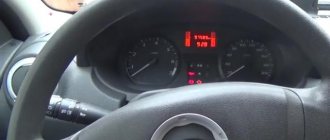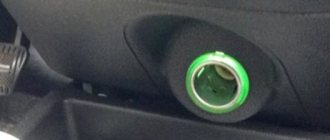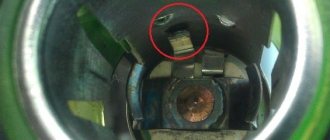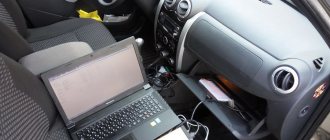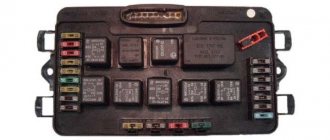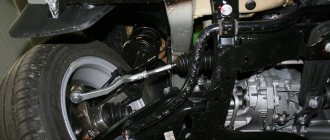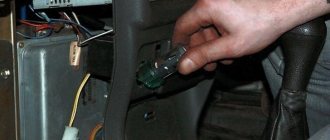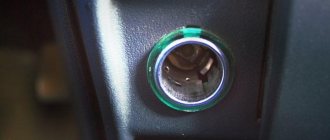February 27, 2015 Lada.Online 333 805 23
The relay and fuse box is also called the mounting block or black box. If problems are identified in the car related to electrical equipment, first check the fuses and relays. If they burn out, we replace them with the same ones, but first we must determine the cause of the burnout. The article contains a complete description of all Lada Largus mounting blocks.
Lada Largus fuse diagram
The first car of this VAZ family was released in 2011, and already in 2013 it became one of the leaders of the Russian car market, further consolidating its victory in 2014. Among the various options, the Largus Cross crossover is offered, which appeared in various trim levels in 2015 and 2021.
In 2017, it was announced the start of production of Lada Largus on gas, which was implemented in 2021, which also became the year of restyling of the family members. You can buy a car of the family with an 8-valve engine and a 16-valve engine. Unlike configurations, this does not greatly affect the set of fuses and relays that can be found in one of the two mounting blocks of the machine.
The first and main one is located in the cabin, and the second is under the hood, which is quite typical for AvtoVAZ models.
How to remove the cigarette lighter on a Grant
First of all, as when working with any component of a car's electrical equipment, you need to turn off the power to the battery and only then proceed to remove the cigarette lighter. Carefully bend the edges so that the plastic protrusions do not interfere, and release the metal cylinder. Then you need to remove the center console of the torpedo.
Video of removing the Granta center console
After that, use a screwdriver to press the top latch on the green plastic case and try to pull the base of the cigarette lighter out a little. Now you need to try to disconnect the connector and completely pull out the Granta cigarette lighter.
Fuse box of Lada Largus in the cabin
The mounting block in the cabin is considered the main one, so the vast majority of electrical circuit fuses are installed here. To be more precise, this block is located to the left of the dashboard, at its end and is covered with a plastic cover, the fastenings of which are clearly visible.
| Fuse no. | Current (amps) | Which electrical circuit does it protect? |
| F1 | 20 | Windshield wiper, windshield wiper switch, heated tailgate relay |
| F2 | 5 | Instrument cluster, fuel pump relay, engine control unit (ECU) |
| F3 | 10 | Brake light switch |
| F4 | 10 | Diagnostic connector, immobilizer antenna unit, body electrical monitoring system |
| F5 | — | Reserve (R) |
| F6 | — | (R) |
| F7 | — | (R) |
| F8 | — | (R) |
| F9 | 10 | Instrument cluster, low left headlight |
| F10 | 10 | Low right headlight |
| F11 | 10 | Instrument cluster, high left headlight |
| F12 | 10 | Far right headlight |
| F13 | 30 | Rear door window motors |
| F14 | 30 | Front door power window motors |
| F15 | 10 | Electronic control of ABS system, acceleration sensors, steering angle sensor |
| F16 | 15 | Electrically heated front seats |
| F17 | 15 | Sound signal |
| F18 | 10 | Left front and rear side lights |
| F19 F20 | 10 7,5 | Right front and rear side lights, glove compartment lights, instrument cluster lights, hazard warning switch, HVAC controls, audio system, cigarette lighter, central locking switch, front power window switches, license plate lights, right rear side lights . Rear fog light |
| F21 | 5 | Electrically heated exterior mirrors |
| F22 | — | Reserve (R) |
| F23 | — | (R) |
| F24 | (R) | |
| F25 | — | (R) |
| F26 | 5 | SRS system |
| F27 | 20 | Rear door wiper motor, horn, TDC sensor, reverse light switch |
| F28 | 15 | Control of interior electrical equipment (energy saving mode) |
| F29 | 15 | Interior electrical control, diagnostic connector |
| F30 | 20 | Interior electrical equipment control |
| F31 | 15 | Fog lights and their relays |
| F32 | 30 | Heated tailgate glass |
| F33 | — | |
| F34 | — | |
| F35 | — | |
| F36 | 30 | Electric motor for heating, air conditioning and ventilation systems |
| F37 | 5 | Electric exterior mirrors |
| F38 | 15 | Audio system, cigarette lighter |
| F39 | 10 | HVAC Motor Relay |
Purpose of fuses in the block
The internal fuse block is equipped with elements responsible for the systems:
- 1 – windshield cleaning device, heated rear window;
- 2 – tidy, ECU control relay for fuel pump, navigation device;
- 3 – stop button;
- 4 – turn signals and power supply to the diagnostic block, control of the size relay, parking module;
- 5-8 – reserve cells;
- 9 – low beam of the left headlight, assistance in controlling the tidy, pump for the headlight cleaning system;
- 10 – is fully responsible for the low beam of the right headlight;
- 11 – far left side and tidy;
- 12 – far right;
- 13/14 – section of rear/front power windows;
- 15 – ABS device and steering wheel rotation and acceleration sensors;
- 16 – electric heating of the rear sofa;
- 17 – beep;
- 18 – side lights of the left side, illumination of license plates, glove compartment;
- 19 – dimensions on the right side of the car, illumination of license plates, glove box, emergency lights, acoustics, switches;
- 20 – rear fog lamp on the left side, and part of the dashboard;
- 21 – rear view mirror shades;
- 22 – navigation system terminal;
- 23 – empty;
- 24 – EUR;
- 25 – power supply to the gas installation;
- 26 – seat belt pretensioner device, airbag electronics;
- 27 – belt position indicator for driver, front passenger, rear window wiper, windshield washer pump control;
- 28 – acoustic module, instrument and interior lighting;
- 29 – diagnostic block, UCH;
- 30 – central locking;
- 31 – front fog lights;
- 32 – heated rear wind window and exterior mirrors;
- 33-35 – empty nests;
- 36 – stove and air conditioner;
- 37 – mirror control drive;
- 38 – cigarette lighter and speakers;
- 39 – depends on the configuration – is responsible for the stove, air conditioning, navigation system.
Largus fuse diagram under the hood
The mounting block in vehicles of the Largus family serves as the location for all relays and part of the fuses. Of the latter, those that protect the circuits of the motor control system are presented. The fuses are marked with the letter F.
The block is located to the left of the battery. To get to it, press out the latches holding the cover on the side, back and front.
| Relay/fuse no. | Current (amps) | Relay/fuse assignment |
| 231(A). | Fog light relay | |
| 753(B) | Headlight washer pump relay | |
| 233 | Heater Fan Relay | |
| F1/F2 | 60 | Electronic control of ABS and ESP systems |
| F1/F2 | 50/25 | Exterior light switch, interior fuse box |
| 700(A), | Cooling fan relay | |
| 474(B) | Air conditioning compressor relay | |
| F1 | 30 | Relay box power supply |
| F2 | 25 | Injection relay power supply |
| F3 | 5 | Power supply for injection system relay, ECU |
| F4 | 15 | Not used |
| 238(A) | Injection blocking relay | |
| 236(B) | Fuel pump relay |
Assignment of fuses in the engine compartment
Each structural element of the mounting block is responsible for its own circuit or separate device.
Purpose of fuse links:
- 43 – power supply for HBO electrics;
- 44/45 – control of ABS units;
- 46 – power supply to the ignition switch;
- 47 – signal to the cabin fuses located after the ignition switch;
- 51 – fuel pump, ECM, ECU relay, head fan, ignition coil protection (depending on modification), phase distribution, canister and DC 1 purge;
- 52 – air conditioning system clutch, radiator head cooler.
Separately, you should consider the protective relays located in the block:
- 299/1 – fog lights and headlight washer;
- 299/2 – turning on the stove;
- 597/1 – control of ABS and ESP systems;
- 597/3 – external optics switch drive, power supply to the interior fuse box;
- 784 – control of activation of the radiator fan and air conditioner.
Fuse box in the engine compartment (VAZ 11189 (8 cells), 21129 (16 cells))
The second part of the electronic safety system is located under the hood. In the figure, the mounting block is indicated by the letter “B” and is hidden under a plastic cover. To open the panel, snap off the plastic clips or unscrew 4 screws (depending on the modification).
For the 8 and 16 valve versions, the placement of the platform is the same.
Why might the cigarette lighter not work?
The principle of the device is the same for all car models. The original purpose of the cigarette lighter socket on the Lada Largus is to light cigarettes, so inside the thin metal rod there is a small alloy thread. After switching to the working position, the contacts close and the spiral begins to heat up. After 15 seconds, sufficient to reach the lighting temperature, the relay is activated and the system returns the socket to its original position.
The cigarette lighter on the Lada Largus can work for a long time if the basic operating rules are followed. But due to age or network overload, it can break down. The most common malfunctions.
- Burnt-out cigarette lighter socket fuse. Each important segment of the electrical network has special protection. Exceeding the maximum current, which occurs due to a short circuit or connecting too powerful devices, threatens the wiring melting and a fire. In order to protect the cables, as well as the relays from burnout, it is the auto fuse that blows. It is necessary to open the mounting panel and replace the used element with a serviceable one, rated 15 amperes.
- "Shorty." If the Lada Largus cigarette lighter fuses burn out frequently, there is a risk that there is a short circuit in the network. This occurs when the positive and negative wires are in constant contact. When the fuses trip, you need to take a tester and then measure the battery voltage with the ignition off. Then we turn it on and measure again. Differences greater than 0.5 volts indicate a short circuit. It is worth ringing all the cigarette lighter wires and eliminating it.
- Broken nest. The active use of foreign electrical appliances leads to the fact that the Lada Largus cigarette lighter connector itself becomes loose, paralleling the extension of the fixing tabs. It is necessary to de-energize the circuit by removing the cable from the battery or removing the fuse. Then you need to bend the contact tabs inside the cartridge socket using a screwdriver or a knife with a thin tip.
- Raid. The ingress of liquid, as well as great age, lead to the formation of rust or oxidized plaque on the contacts of the socket. This prevents the cigarette lighter from working properly on the Lada. It is advisable to periodically take preventive measures: remove the rod from the connector and rub the problem areas with sandpaper or a needle file to the metal base.
- Burnt out backlight. Each cigarette lighter socket on the Lada is equipped with a light filter. This helps to find the connector at night. A lamp is responsible for its operation, the spiral of which burns out with age and the fuse trips. To repair, you will need to remove the device and replace the light bulb with a working element.
- Burnt-out filament. After prolonged exposure to temperature, the spiral inside the socket rod may burn out, causing the fuse to trip, causing the device to stop functioning. Restoration in this case does not make sense - the cigarette lighter of the VAZ Largus model needs to be replaced.
- Fallen cables. Soldering points may fall off over time, and constant shaking may cause the insulation to fray along with the copper wire. It is necessary to inspect all the cables of the Lada socket for kinks, breaks or melted insulation. Otherwise the fuse will trip. The latter should be patched with insulating tape, the contact points should be soldered with a soldering iron with tin, and the broken cords should be replaced with new ones.
